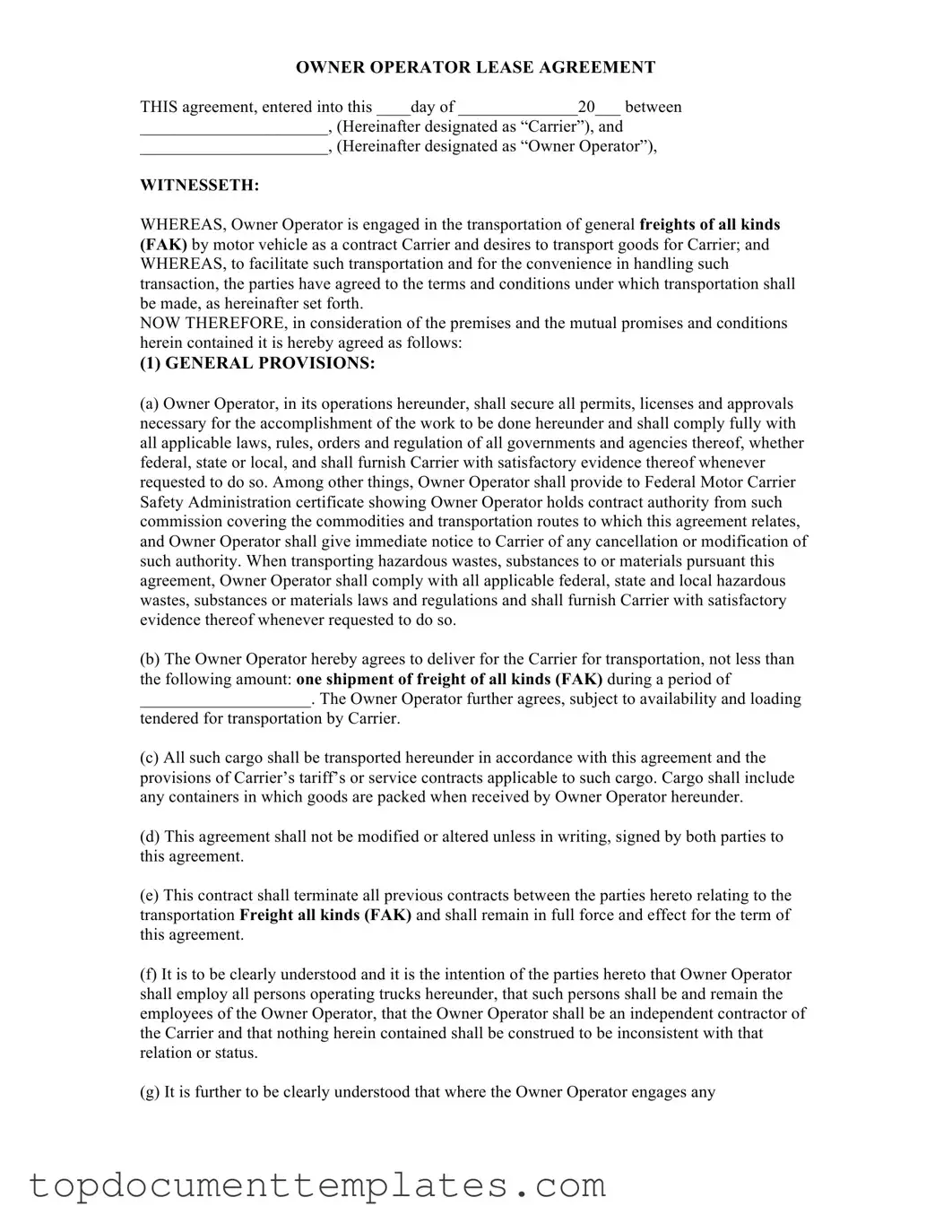The Owner Operator Lease Agreement form is a vital document that establishes a formal relationship between a carrier and an owner operator in the transportation industry. This agreement outlines the responsibilities and obligations of both parties, ensuring that the owner operator is equipped with the necessary permits and licenses to operate legally. It specifies the types of goods to be transported, the conditions under which the transportation will occur, and the expectations for cargo care and custody. Additionally, the form emphasizes the importance of compliance with federal, state, and local regulations, particularly when dealing with hazardous materials. It also delineates insurance requirements, ensuring that both parties are protected against potential liabilities. The agreement is designed to be clear and comprehensive, covering everything from compensation terms to confidentiality clauses, thus fostering a professional and trustworthy working relationship. By clearly defining the roles and responsibilities, this document helps to prevent misunderstandings and disputes, promoting a smooth operational process for both the carrier and the owner operator.
